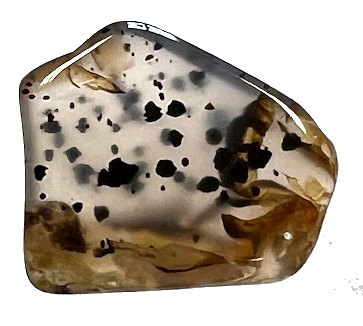Gathering Moss
Wilner OD, Rossman
GR
Division of Geological and Planetary
Sciences,
California Institute of Technology, Pasadena, CA, USA
Introduction
Agate hosts a variety of inclusions, which are
largely responsible for the variegations that visually distinguish it
from common chalcedony. Color in agate, for example, is generally
the result of minute colored particles, often iron-oxides, that
accumulate in porous agate zones (see pages 40–47). acicular inclusions
stemming from chalcedony or agate rinds termed “sagenite” are not
uncommon and likely predate agate formation. Further, a host of
“mosses” that formed at the same time as, or after, the chalcedony
adorn agate from localities around the world.
An array of terms including “plume” and
“dendritic” categorizing agates containing plantlike inclusions
have been bandied about for centuries. Most are market conventions,
however, and have not been particularly well-defined (Pabian &
Zarins 1994, Kile 2002). Broadly speaking, “moss agates” are fibrous,
microcrystalline silica (chalcedony-mogánite) that contains inorganic
inclusions that at least vaguely resemble moss (Brown 1957, götze et
al. 2020). this resemblance often comes into focus when organic mosses
are viewed under magnification. Botanists have identified upwards of
12,000 species of rootless, spore-bearing plants — mosses. not to be
outdone, agate-mosses are endlessly expressed as combinations of
strings, webs, clouds, and flames as well as arboreal shapes and
inchoate splotches. in the hands of a talented lapidarist, these shapes
can be framed to give the impression of ink wash landscapes or of
abstract expressionist art.

